Nikon Coolpix S7c Review
Nikon Coolpix S7c
Nikon has a reputation for quality, but is the Coolpix S7c really worth the money?
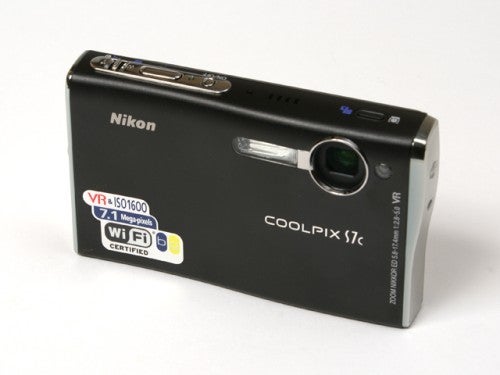
Verdict
Key Specifications
- Review Price: £236.00
The run up to Christmas is always a busy time in the digital camera market and Nikon has been busier than most, launching five new compact cameras within the last couple of months. Nikon has three distinct lines of compact cameras, the ‘L’ series for Life, the ‘P’ series for Performance, and the ‘S’ series for Style. I reviewed the swivel-bodied S10 last week and although it was indeed very stylish, I was somewhat disappointed by its handling and performance.
This week I’ve got another of the S series, the S7c, an ultra-slim 7.1 megapixel model featuring a huge 3in LCD monitor, 1,600 ISO maximum sensitivity, face detection technology, electronic vibration reduction and Wi-Fi connectivity. It was launched in September with a recommended price of £299.99, which is rather expensive for a 7MP 3x zoom compact, however it is available online for £237. Which is still rather expensive for a 7MP 3x zoom compact.
Compare it with the Casio EX-Z70 (£180), the Kodak V705 (£220), the Olympus mju 700 (£163), the Pentax Optio T20 (£199), the Samsung NV3 (£173) or the Sony DSC-T10 (£216). To be fair there are one or two more expensive 7 megapixel 3x zoom cameras, such as the Canon IXUS i7 or the hilariously overpriced Sony DSC-T50, but it’s a very short list.
So what’s it got that makes it worth the money? Well it’s certainly got style, and plenty of it. Like most Nikon cameras, the build quality is impeccable. The S7c has an all-metal body finished in an attractive matt black with chrome trim, and has a nicely understated design. The body has a wave-like shape, with a smooth curve running the length of the front panel and reprised on the left-hand trim. The camera is thinner towards the right hand end, although it flares out again right at the edge, obviously intended to provide a handgrip.
At its widest point the camera is just 21mm thick, making it one of the slimmest cameras on the market. Its other measurements are also diminutive, although thanks to the large screen it isn’t among the smallest available. Nonetheless it will slip unobtrusively into a shirt pocket or handbag, and weighing 140g dry it won’t rip through the lining.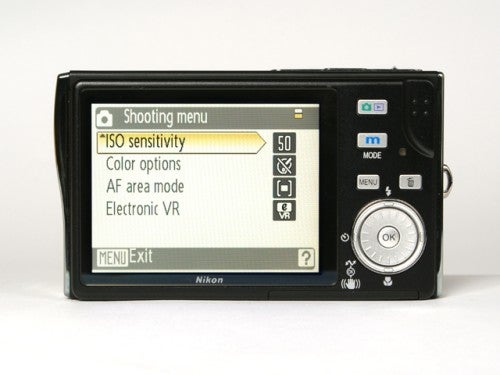
Having a big screen on a small camera means there isn’t a lot of room on the rear panel for anything else and here we come to one of the S7c’s main problems. At the top right of the rear panel is something that is clearly supposed to be a thumb rest and it even has a little pattern of four raised dots to give it some grip, but it’s only 7mm wide. Unless you have a right thumb the width of a pencil it’s virtually useless. You have to grip the camera by the very edge, and it feels awkward and insecure. That pretty matt finish is quite slippery, and several times while I was testing only the wrist strap saved me from having to write a grovelling apology to Nikon for having dropped their camera.
The controls are also a bit of a nightmare. The main Mode button is simple enough; it brings up a rotary menu on the monitor from which you can select Shooting, Hi-ISO, Scene, Sound recording, Movie, Setup or Wireless LAN modes. Selecting these modes is done using the D-pad, which has a rotating ring, as well as four directional functions and a central OK button. I found the rotating ring part of this control to be fiddly, over-sensitive and generally irritating to use, while the directional elements were stiff and unresponsive. A simple conventional D-pad would have done just as well and been a lot easier to use.
If Scene mode is selected, the individual programs are then selected via the Menu button. The main modes (Portrait, Landscape, Sports and Night Portrait) have sub-menus of their own for different shooting conditions. The camera lacks what is called “shooting priority”, which means that to turn off the menu you have to press the menu button again, rather than just tapping the shutter button.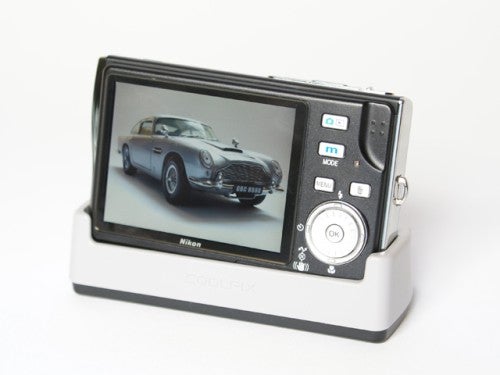
The result is that to get from standard Shooting mode to Portrait mode can take as many as five button presses and three turns of the rotary bezel. Compare this with the Smart Touch system on Samsung’s NV10. I really should have given that a higher mark.
The top panel controls are also very small. The power button is tiny and recessed, but while a bit fiddly it works well enough. However the zoom control is absolutely horrible. It’s a tiny little slider switch which manages to be both awkwardly placed and over-sensitive. There are only six zoom steps between wide angle (35mm) and telephoto (105mm) but it’s almost impossible to hit the right one first time.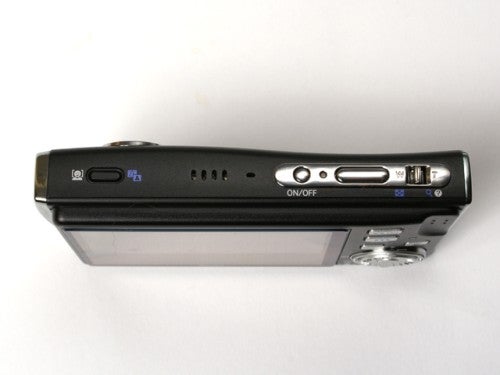
In terms of performance at least the S7c shows its class. It starts up in under 2 seconds, and in continuous shooting mode it can manage approximately one frame a second, apparently until the card is full. With image quality set to maximum the saved JPEG files average around 2MB each, quite small for a 7 megapixel camera. This means that a 1GB SD card can hold about 282 images, but it does present the possibility of compression artefacts.
The camera is powered by a 730mAh Li-ion battery, which is rather small for a camera with a 3in screen and Wi-Fi capability, but I took well over 200 shots with it on a full charge without any sign of it running out of steam, so this isn’t likely to be a problem. It comes with a neat USB/charger cradle, so it is being charged whenever you connect it to download pictures.
In good light the AF system is acceptably quick, but using the camera indoors revealed that it doesn’t like low light shooting at all. The AF system slows down to around a second even in a daylight-lit room, and in conditions such as a pub or club it becomes very slow, taking nearly twp seconds to achieve focus. The AF illuminator only has a range of about 1.5m at best, so it’s not much use in the dark.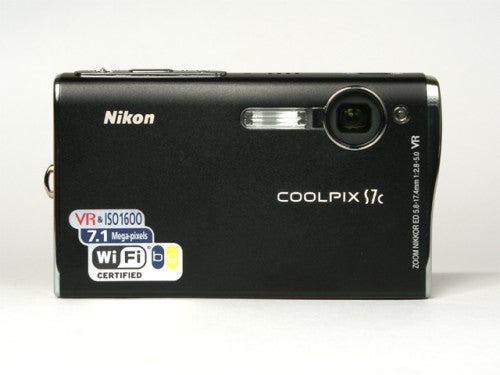
This is a real shame, because the S7c’s one real strength is its high-ISO performance. It has a maximum sensitivity of 1,600 ISO, and can produce usable images at this setting, and even better ones at 800. If only it had a better focusing system it would be ideal for social photography.
Overall picture quality isn’t bad for a snapshot camera, producing plenty of fine detail, and the exposure system copes well with varied lighting. However, it also has a number of weaknesses. The tiny lens produces a lot of spherical distortion at the widest end of the zoom range, but the biggest problem is the automatic white balance system, which is easily confused and produces inconsistent colour reproduction even in bright daylight.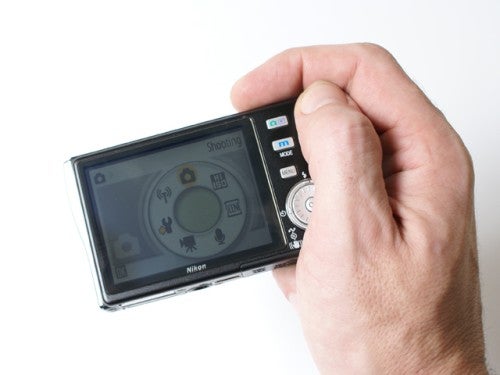
I was also concerned to note visible darkening in the corners of some frames, particularly on wide angle shots at the maximum aperture of f2.8. All in all, another disappointing performance from an expensive Nikon camera.
”’Verdict”’
The Coolpix S7c is another expensive Nikon S-series camera with major handling problems, and also some serious issues with image quality. It is certainly stylish, well made and has a number of clever high-tech features, but these qualities are overshadowed by its many weaknesses. Considering its high price and the stiff competition, the S7c has little to recommend it.
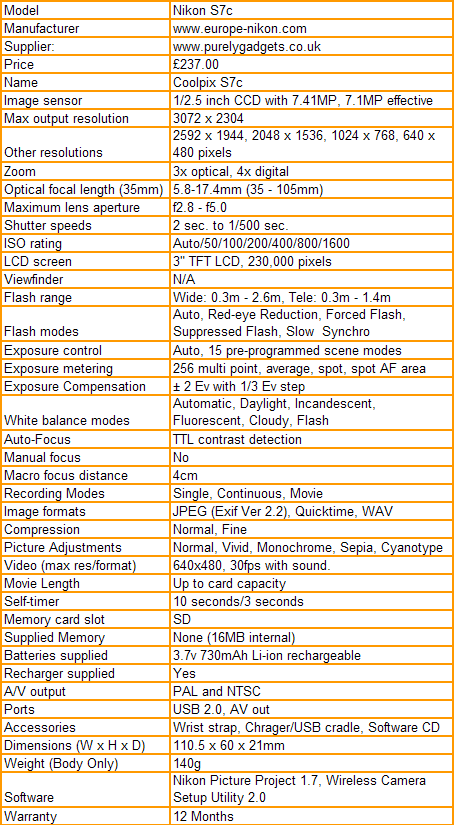
”A range of test shots are shown over the next few pages. Here, the full size image has been reduced for bandwidth purposes, and a crop taken from the original full resolution image has been placed below it in order for you to gain an appreciation of the overall quality.”
—-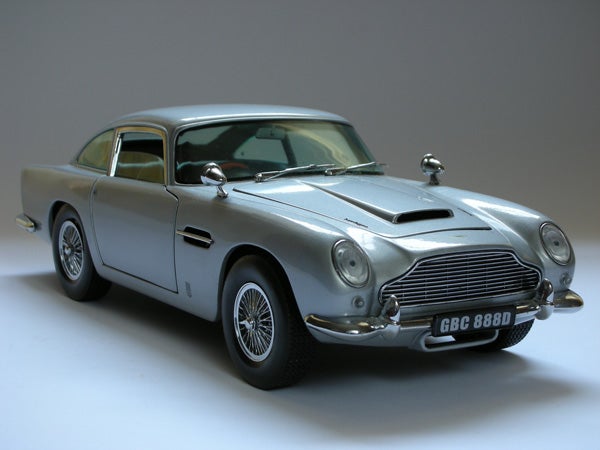
—-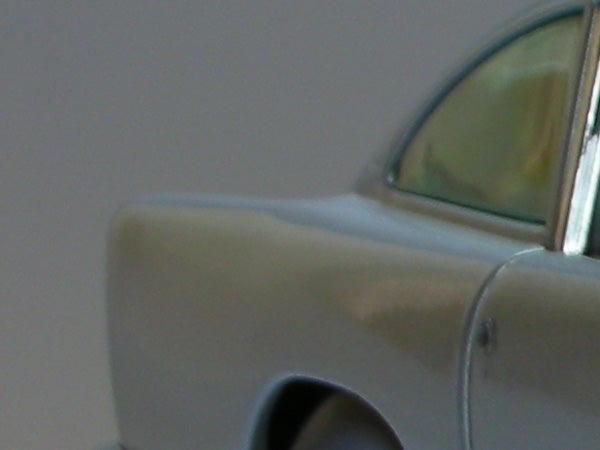
½ sec, f4.1, 50 ISO
At the lowest ISO setting the S7c produces a very high quality result, with perfect exposure, lots of detail and no image noise at all.
—-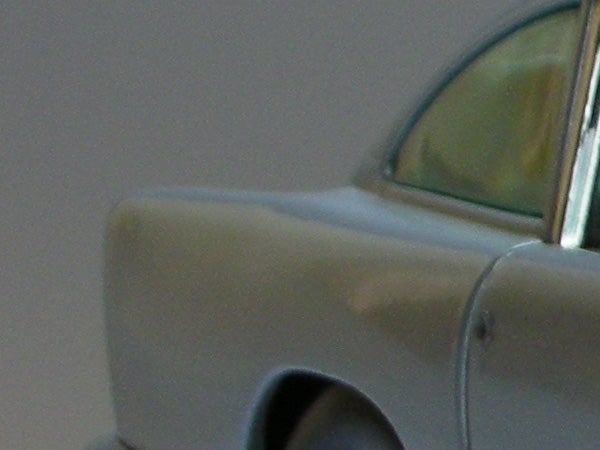
1/4 sec, f4.1, 100 ISO
At 100 ISO there is virtually no difference between this and the previous shot.
—-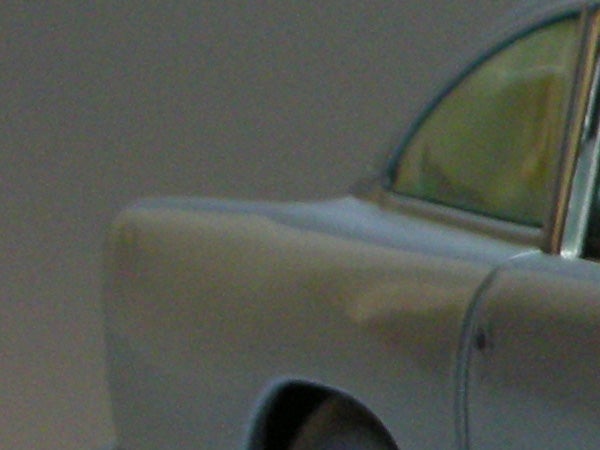
1/8 sec, f4.1, 200 ISO
At 200 ISO some cameras suffer from considerable image noise, but the Nikon produces another smooth image, with barely a trace of roughness in the shadow areas.
—-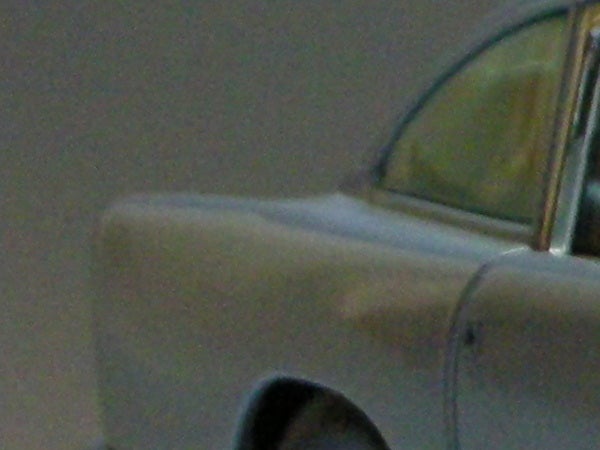
1/15 sec, f4.1, 400 ISO
At 400 ISO image noise is just starting to appear in the mid-tone areas, in the form of colour speckling. However this is way better than most of its rivals.
—-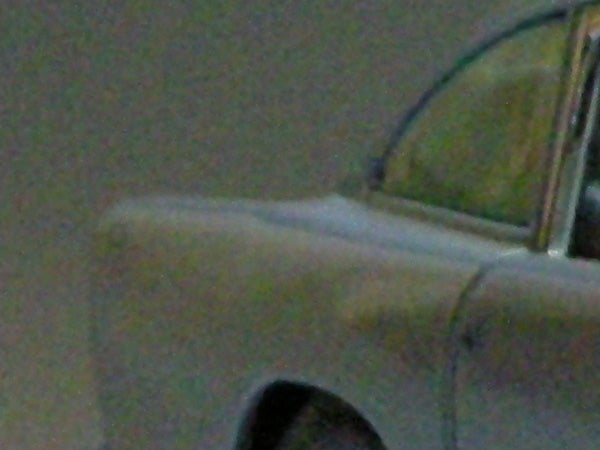
1/30 sec, f4.1, 800 ISO
At 800 ISO there is progressively more image noise, spreading to the lighter areas, although the shadows remain nice and dark. This image is quite usable.
—-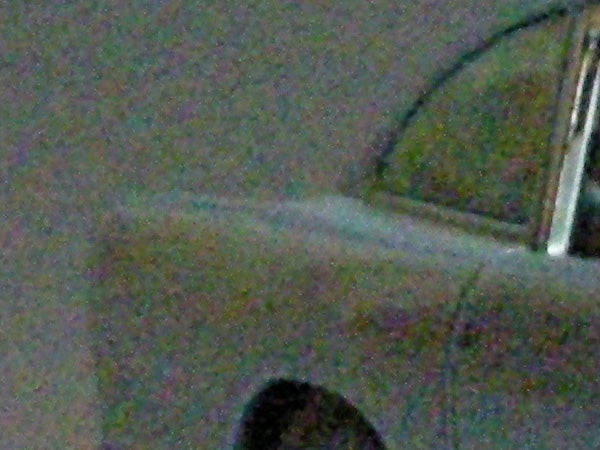
1/75 sec, f4.1, 1600 ISO}
At the maximum setting of 1600 ISO there is now noise visible right across the image, but it is reasonably well controlled and the image is just about printable.
—-
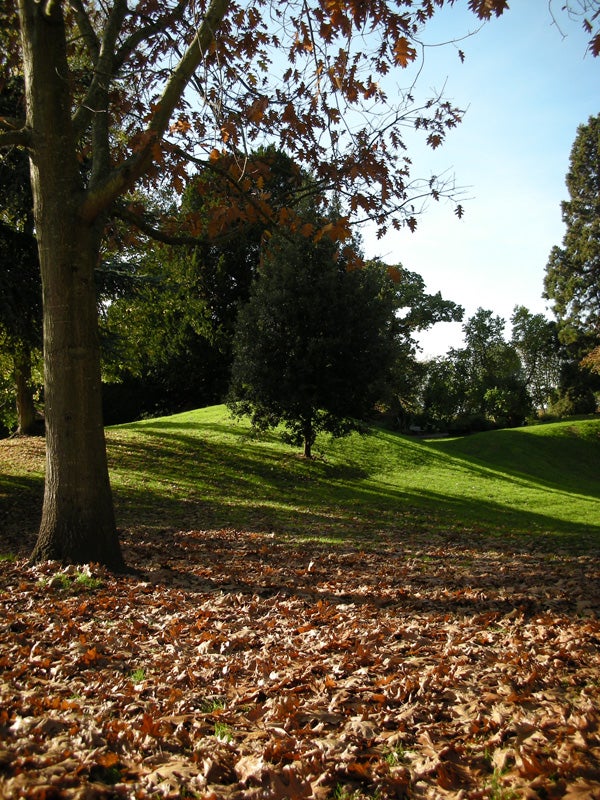
I found that the automatic white balance system produced inconsistent colour reproduction even in good light. Take a look at the brown Autumn leaves in this sunlit shot.
—-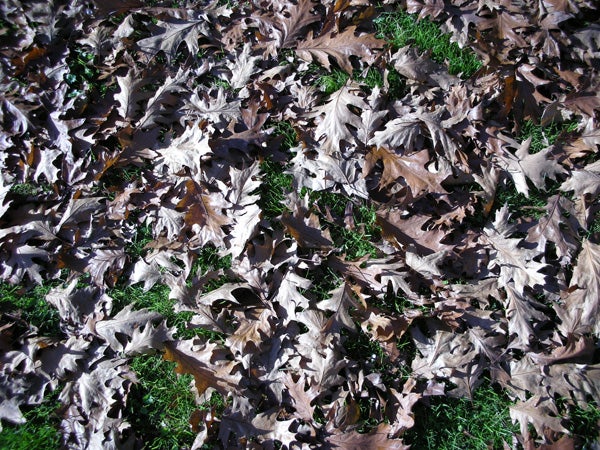
These are the same leaves shot in isolation. The colour has confused the white balance system into adding a nasty blue cast to the image, robbing the leaves of their red colour.
—-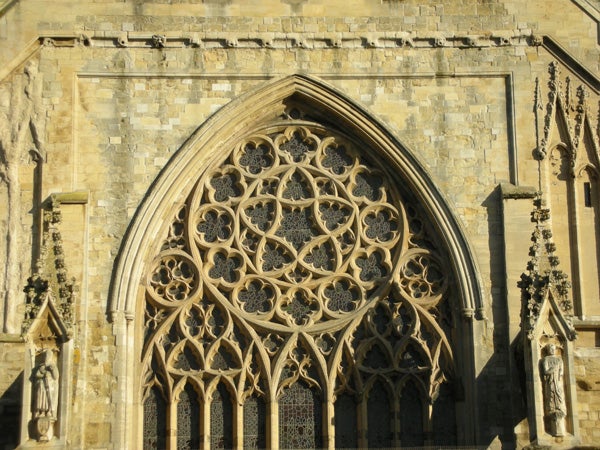
I try to take this same shot with many different cameras, so you can get an accurate idea of the level of detail recorded. See the full-res crop below.
—-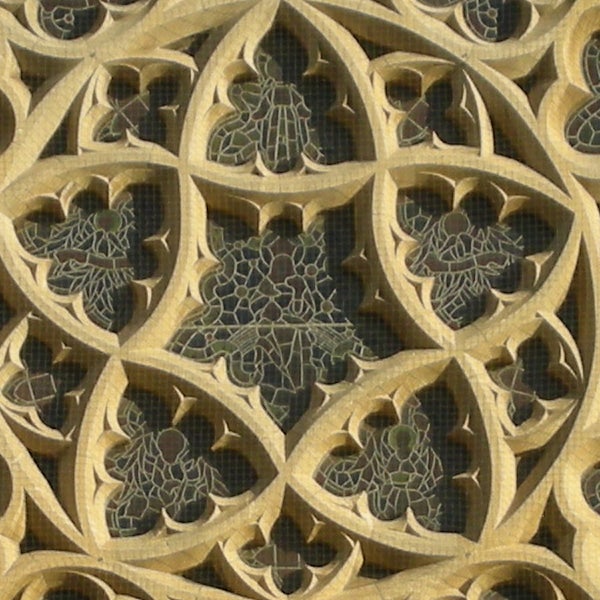
This is a full-resolution crop of the above image, and shows the excellent level of detail captured by the S7c’s 7.1MP sensor. The anti-bird netting on the cathedral stonework is clearly visible.
—-
The S7c has a slightly weak flash, with a range of just 2.6m at wide angle and 50 ISO. Coverage is good though, and recharge time is nice and quick.
—-
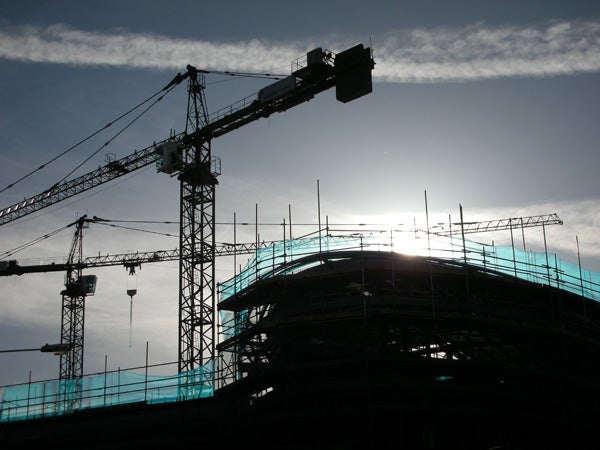
The exposure system copes well with unusual lighting conditions, enabling you to take some striking shots.
—-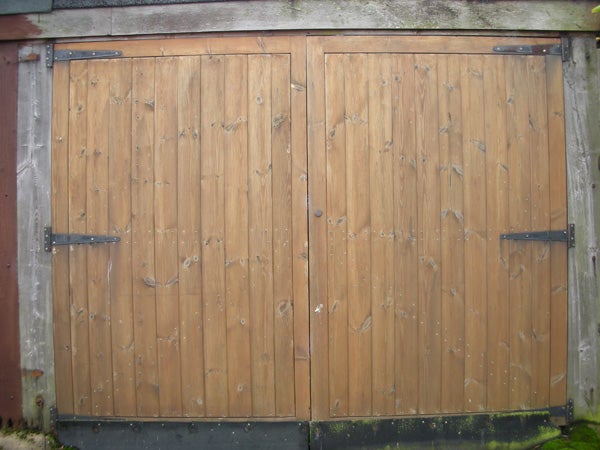
The tiny lens produces significant spherical distortion at the widest setting, as shown by the curving lines on this door. They should be straight.
—-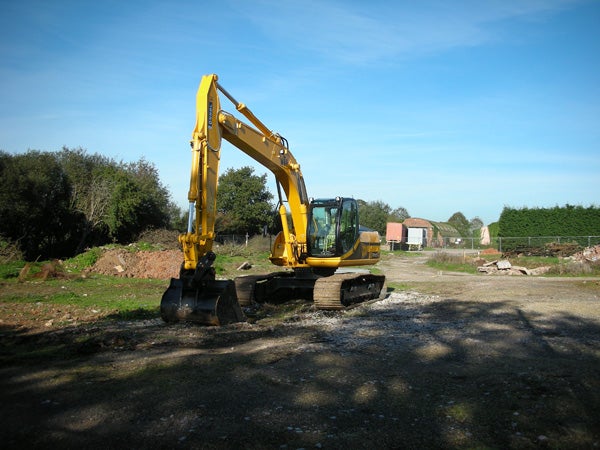
This was taken at the widest setting, equivalent to 35mm on a, er, 35mm camera.
—-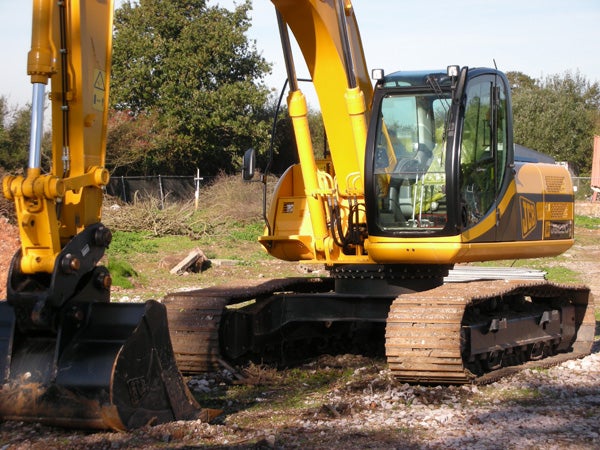
Taken from the same spot as the shot above, this shows the extent of the telephoto end of the zoom, equivalent to 105mm. Note also the inconsistent colour balance between the two shots.
—-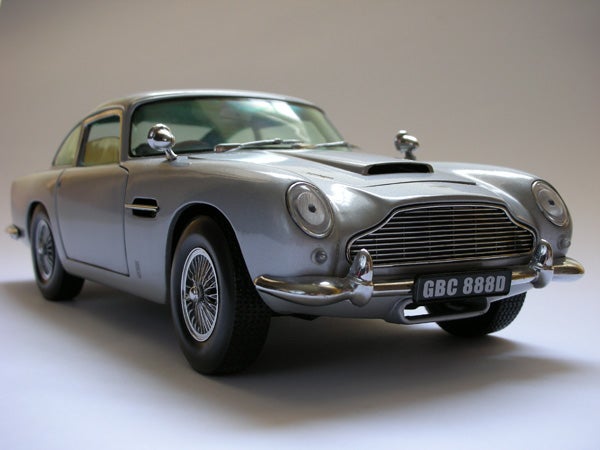
The S7c has a minimum focusing range of 4cm, but focusing is very slow at this distance.
—-
Trusted Score
Score in detail
-
Value 4
-
Image Quality 6
Features
| Camera type | Digital Compact |
| Megapixels (Megapixel) | 7.1 Megapixel |
| Optical Zoom (Times) | 3x |

